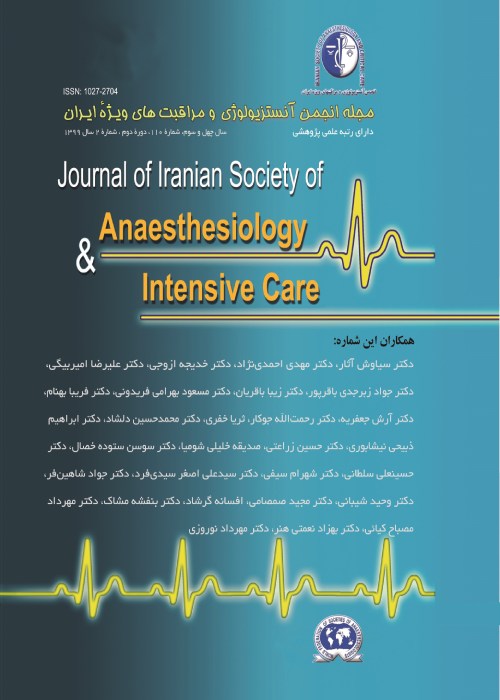Intravenous rapid sequence induction of anesthesia for rigid bronchoscopic dilatation in patients with severe postintubation tracheal stenosis
Author(s):
Abstract:
Introduction
Rigid broncoscopic dilatation is the lifesaving method for management of severe tracheal stenosis carried out under general anesthesia. However, for both anesthesiologist and bronchosco-pist, this procedure represents a most challenging practice. Inhalational induction which maintains spontaneous ventilation is commonly recommended in these patients. However, it needs a long time to reach the appropriate levels of anesthesia, and also airway instrumentation can precipitate coughing and complete airway obstruction. This paper describes our experience with rigid bronchoscopic dilation procedures performed with intravenous rapid induction of anesthesia in patients with severe postintubation tracheal stenosis. Materials And Methods
We conducted a retros-pective chart review of one hundred patients with severe post intubation tracheal stenosis who underwent rigid bronchoscopy for dilation of stenosis under general anesthesia at Masih Daneshvari and Kasra hospitals from Nov. 2011 to Sep. 2012. A rapid sequence induction of anesthesia was performed by intravenous injection of sodium thiopental and succinylcholine. Then an appropriate size of rigid bronchoscope was introduced into the trachea. If the airway was secured, dilatation of stenosis was done serially by different sizes of rigid bronchoscopes. Demographic, stenosis characteris-tics, and complications were recorded.Results
There were 76 males and 24 females with mean age of 31.5±17.5 years. Following induction of anesthesia, the airway was rapidly secured in the first attempt with rigid bronchoscope in 97 patients. In 3 patients insertion of rigid bronchoscope was encountered with some problems, although airway control was done well and no major complications occurred.Conclusion
The intravenous rapid sequence induction of anesthesia by use of succinylcholine is safe for rigid brochoscopic dilatation in patients with severe post intubation tracheal stenosis. Close communication between the anesthesia and surgical teams are mandatory for the safe outcome of this procedure.Keywords:
Language:
Persian
Published:
Iranian Journal Of Anaesthesiology and Critical Care, Volume:35 Issue: 3, 2013
Page:
28
magiran.com/p1210256
دانلود و مطالعه متن این مقاله با یکی از روشهای زیر امکان پذیر است:
اشتراک شخصی
با عضویت و پرداخت آنلاین حق اشتراک یکساله به مبلغ 1,390,000ريال میتوانید 70 عنوان مطلب دانلود کنید!
اشتراک سازمانی
به کتابخانه دانشگاه یا محل کار خود پیشنهاد کنید تا اشتراک سازمانی این پایگاه را برای دسترسی نامحدود همه کاربران به متن مطالب تهیه نمایند!
توجه!
- حق عضویت دریافتی صرف حمایت از نشریات عضو و نگهداری، تکمیل و توسعه مگیران میشود.
- پرداخت حق اشتراک و دانلود مقالات اجازه بازنشر آن در سایر رسانههای چاپی و دیجیتال را به کاربر نمیدهد.
In order to view content subscription is required
Personal subscription
Subscribe magiran.com for 70 € euros via PayPal and download 70 articles during a year.
Organization subscription
Please contact us to subscribe your university or library for unlimited access!


